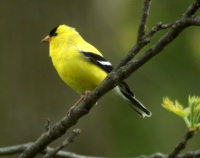 |
American Goldfinch 11-14 cm all year
Goldfinches are another common visitor to our feeders. Their yellow colour adds a nice brightness to the feeders during a rather drab winter. Flocks of Goldfinches fly in a distinctive undulating pattern. They love dandelions and that is likely why I have so many Goldfinches around my home.
|
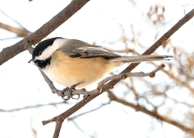 |
Black Capped Chickadee 13-15 cm all year
These very curious year round residents keep the forest around the HICOP’s bird feeders alive. In the winter they can be enticed to land on an outstretched hand if it contains sunflower seeds. Bring your own seed or ask us for some.
Photo courtesy of Maggie – 97th Hamilton
|
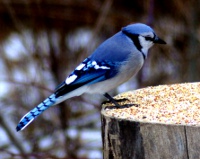 |
Blue Jay 28 – 31 cm all year
Blue Jays are large and aggressive enough to chase squirrels and even cats from backyard feeders. They terrorize smaller birds but we nevertheless enjoy seeing these beautiful and vocal visitors.
|
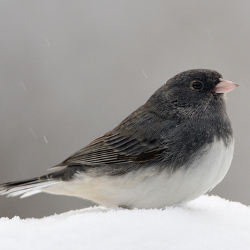 |
Dark-eyed Junco 14-17 cm winter
This winter visitor is one of Ontario’s most common birds. It is a ground feeder so it is most often seen scrounging underneath the bird feeders for seed dropped by perching birds.
|
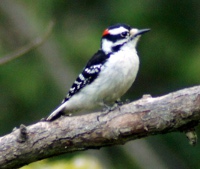 |
Downy Woodpecker 15-18 cm all year
We have seen two pairs of Downys and one of the larger Hairy Woodpeckers at our feeders. The Downey is probably the tamest of all the woodpeckers and they seem quite tolerant of us.
|
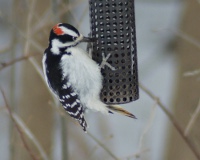 |
Hairy Woodpecker 19-24 cm all year
These are often confused with their smaller cousins the Downy Woodpecker. This male will hog our feeder for long periods of time.
|
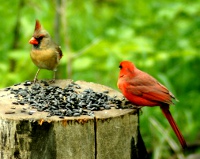 |
Northern Cardinal 19-23 cm all year
Cardinals are one bird that is easily identified by most people in southern Ontario. The male with its bright red plumage is easily spotted from a long way off. A male and female cardinal remain together year round and can often be heard calling to each other in the winter.
|
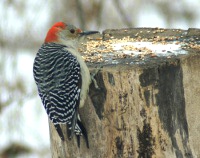 |
Red Bellied Woodpecker 23-27 cm all year
This is the rarest of Ontario’s woodpeckers so it was a treat to see one near our feeder. Their head and breast feathers are so soft that they almost look like fir. It is often considered a pest because it eats fruit as well as the bugs and seed commonly eaten by other woodpeckers.
|
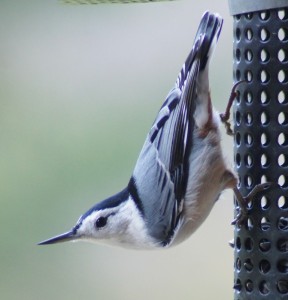 |
White-breasted Nuthatch 15 cm all year
The white breasted nuthatch is another common visitor to our feeders. Both nuthatches are easily spotted on tree trunks because of their habit of going head first down the trunk. Unlike their red-breasted cousins, which are smaller, these have a white underside and no black strip across their eyes.
|








